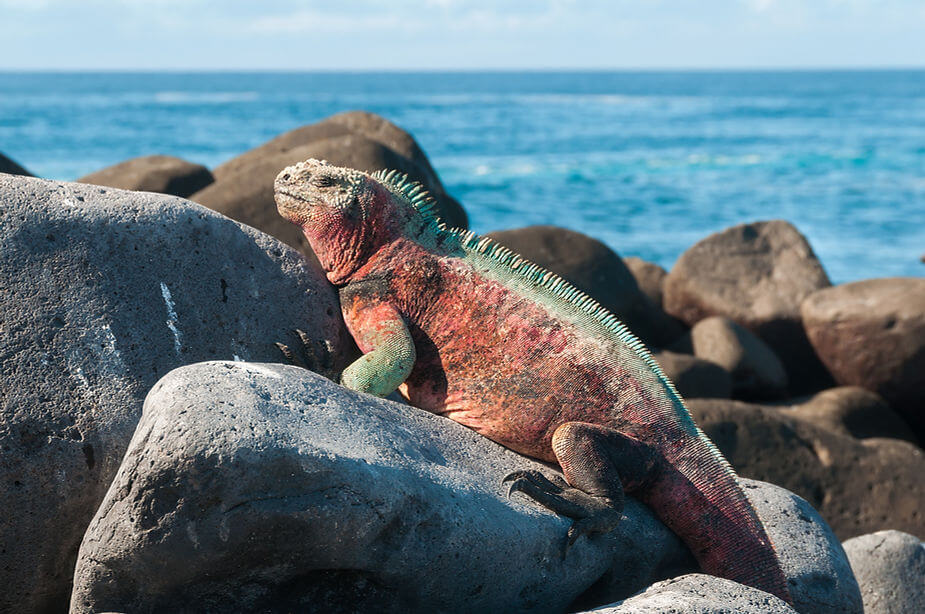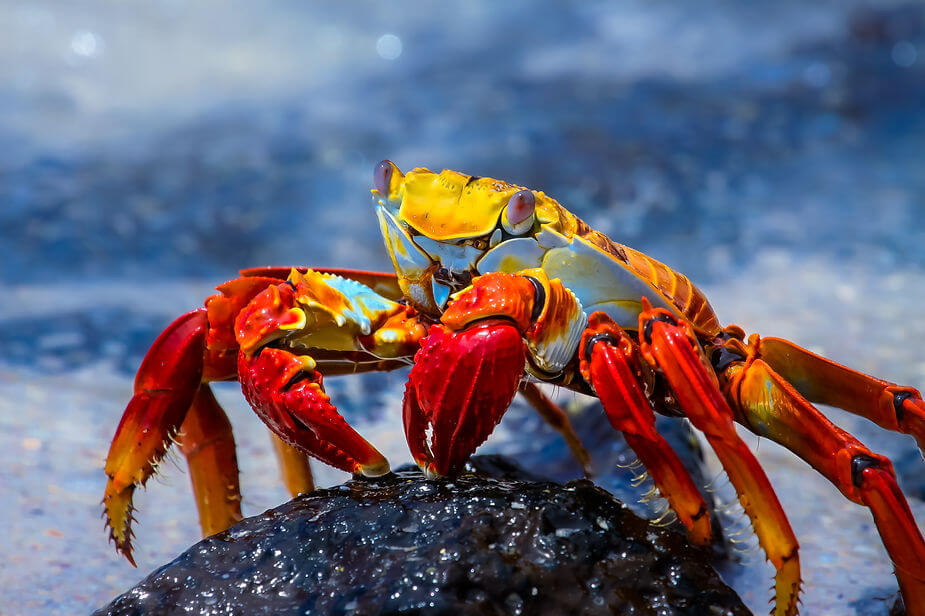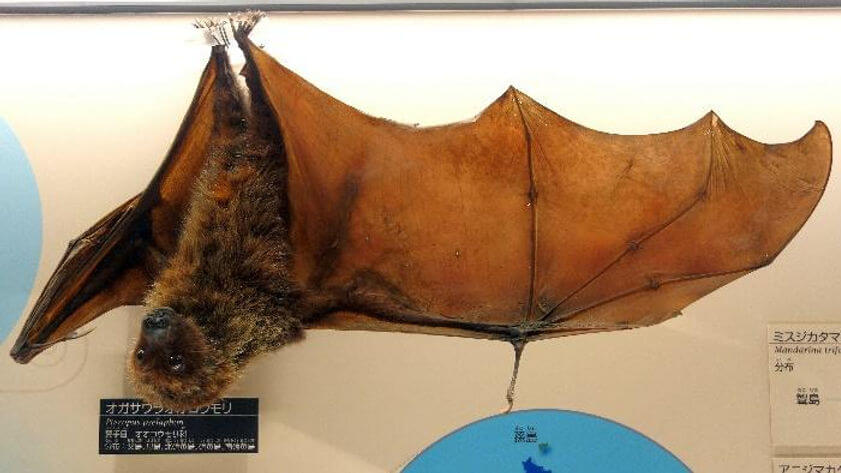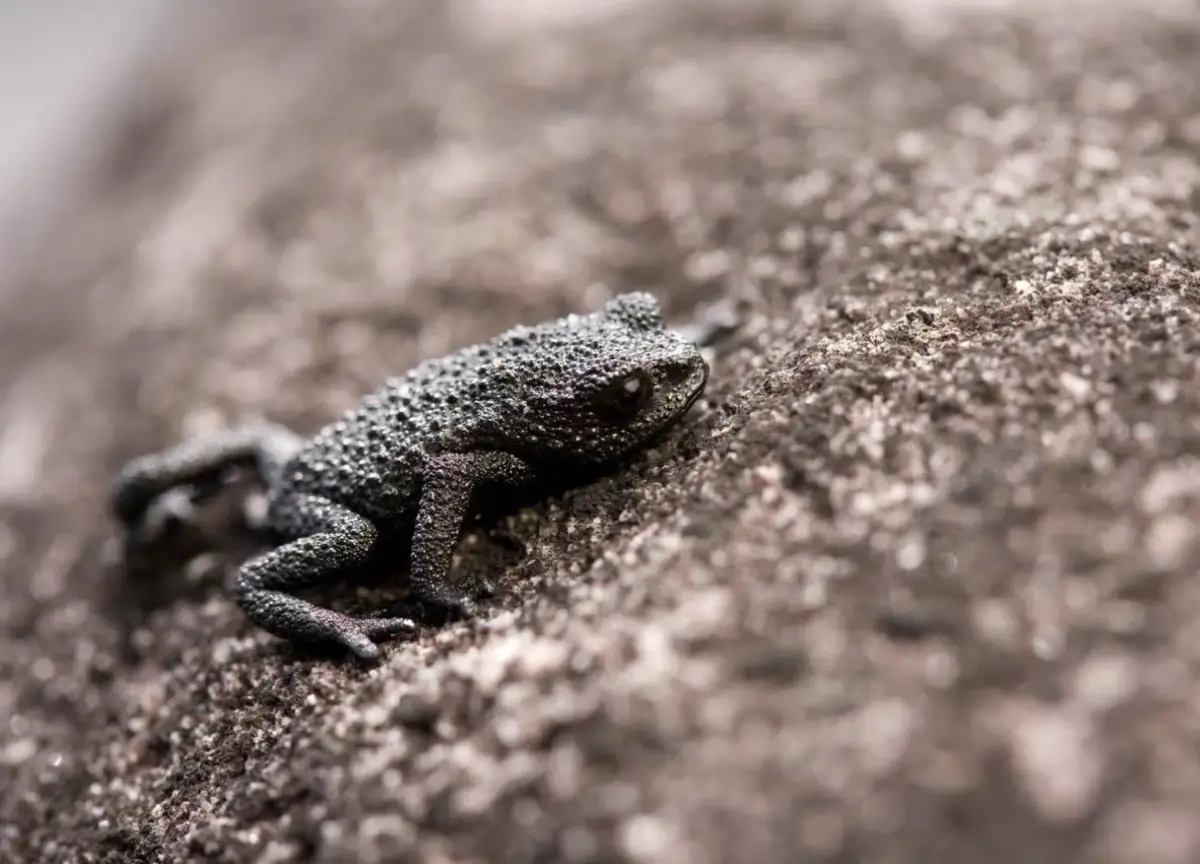Unique Island Animals
The world is an incredibly diverse place. There are billions of unique lifeforms within millions of different types of species and subspecies. And life exists in almost every type of terrain and climate on earth!
Certain species that live on islands have adapted in different ways from similar creatures on the continents. Due to their isolation, some of them have developed cool and unique features that aren’t found in their continental cousins.
One of the most unique places in the world for animals that you won’t find anywhere else is the Galapagos Islands of Ecuador. Located way out in the Pacific Ocean off the coast of South America, these groups of islands have some amazing creatures. Several of them make our list below, as well as a few others from other islands around the world. Let’s dive in and learn about these cool, unique island animals!
Marine Iguana

For example, their tails are flattened laterally, similar to a crocodile, which allows them to be great swimmers. They also have long, sharp claws that allow them to cling to rocks underwater when there are heavy currents.
So, what do they like to eat? Almost exclusively seaweed and algae. Their short, blunt snouts and razor-sharp teeth make it easy for them to scrape these tasty treats off rocks. They’ve even developed an extra gland that helps to clean their blood of all of that salt they ingest while eating. Pretty neat!
Blue-Footed Booby

Their famous blue feet belong to the males, and they use them in an elaborate mating dance to attract a mate. (Maybe they were the inspiration for Elvis Presley’s song, Blue Suede Shoes?) Once they have chosen a partner, the egg is not laid in a nest but rather on the open ground, where the parents alternate sitting on it until it’s ready to hatch.
The Blue-Footed Booby is a great fisherman. They normally fish in flocks, and it’s quite the site to see a big flock of these birds circling in the sky before they dive into the water! An added benefit of their big blue feet is that once they dive in, they can swim for some time underwater as they go after their prey.
Giant Tortoise

The oldest recorded Giant Tortoise was Tui Malila, a Madagascar Radiated Tortoise, who is said to have been 165 years old when she passed away in 1965.
Giant Tortoises are herbivorous and love to eat things like grass, cactus leaves, and fruits native to the Galapagos. There are two types of tortoises on the islands – one has a saddle-backed shell while the other has more of a dome-shaped shell.
Unfortunately, there aren’t many Giant Tortoises around anymore. They were hunted for food and trophies for most of the last two centuries, and only about 60,000 survive in the wild today. Lonesome George (pictured), for example, was the last of his particular species of Giant Tortoise to live. Thankfully, they are a protected species, and scientists and conservationists are optimistic that most species of Giant Tortoise can make a comeback.
Sally Lightfoot Crabs

The rumor is that they got their name from a famous Caribbean dancer because they are extremely quick and agile. They can jump from rock to rock with ease and even are able to climb vertically!
The females carry their eggs on their stomachs, and when she’s ready to lay them, she swims into the ocean and lets them go in the water. The baby crabs spend their first couple of days eating phytoplankton until they transform into juvenile crabs and swim back to shore.
Bonin Flying Fox

They are different than other types of bats because, instead of relying on echolocation to fly around at night and find food, they tend to feel their way around trees, moving slowly from branch to branch. Because of this, they mostly eat plants and fruits (a.k.a. herbivorous).
They also prefer to be by themselves instead of in great big bat colonies, though that changes when winter comes. Then they don’t mind being so close together and make a huge ball of bats to stay warm!
Pebble Toad

Not only is turning into something that can roll away useful to get away from predators like tarantulas and snakes, but it also allows them to hide in plain sight. Because of their color and shape, they also look like tiny rocks and therefore are able to camouflage right into their surroundings. This is good news for the pebble toad because it can’t move fast or jump far with its legs.
You can find the pebble toad on the islands just off the coast of Venezuela in South America.
Pygmy Three-Toed Sloth

Also known as the monk sloth or dwarf sloth, it is significantly smaller than other types of sloths. A normal-sized male is about 20 inches long and weighs less than 8 pounds – that’s about the size of a small cat!
Which one of these island-dwelling creatures is your favorite? Let us know the next time you come in for your dental check-up!

At Jungle Roots Children’s Dentistry & Orthodontics, we strive to provide the highest comprehensive pediatric and orthodontic dental care in a unique, fun-filled environment staffed by a team of caring, energetic professionals. We believe the establishment of a “dental home” at an early age is the key to a lifetime of positive visits to the dentist.


















